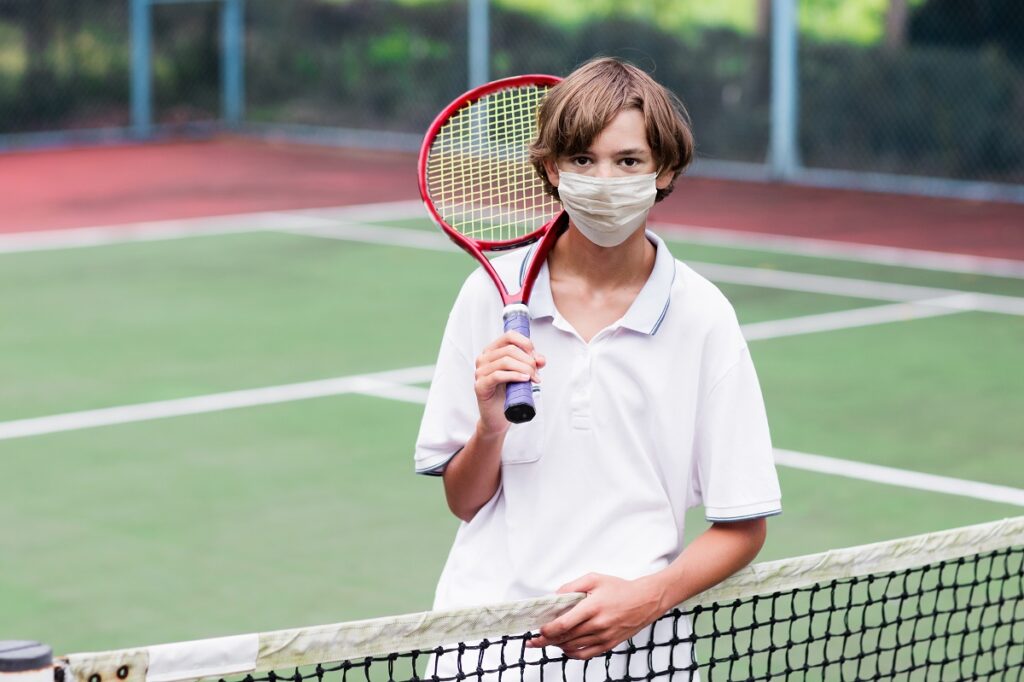Tennis Life After Coronavirus

It has been a devastating two months for our industry, with the vast majority of tennis pros and management largely unemployed, like so many people in other fields. It looks like the pandemic will have a long lasting effect on the sport, and some things might never go back to be the way they were before it.
Our first goal as an industry should be not to fall into a depression, which is easy to do. The game was on pause for a few months and people are in shock, but if I learned anything from this pandemic it is that there is so much love and passion for the game of tennis and that sports remain such a huge part of our lives.
The game will survive this, we might have to use some imagination and re-invent ourselves as teaching pros, but the main thing we need to do at this time is stay positive and not panic. There is a great future ahead for this game, and we might come out of this in a better place.
The bottom line for tennis is that it is one of the safest sports to play in this social distance era we are in. Still, the pandemic will affect the sport in more than one way, mostly in a negative way, but ironically in some ways as tennis may actually attract new players who might choose to stay away from contact sports until a vaccine is found.
The negatives are obvious, with the new normal discouraging gatherings there is a danger that group trainings will not be allowed for some time, which would be a big hit on most tennis clubs that rely on junior and adult group programs. The same goes for the popular summer camps that host massive amounts of kids in academies all over the country every summer.
This means that most tennis lessons would be private one-on-one sessions which will make the game even more expensive and ultimately result in many pros losing their jobs, or having to cut down their hours on court. If this continues, it will no doubt hurt the game.
There is also the issue of tournaments. It will be very challenging in the post-Coronavirus era to run large draws, cramming many players into a clubhouse, sharing locker rooms, etc. National events with people traveling from all over the place are a question mark as well. Until there is a vaccine, it is hard to imagine these massive events coming back.
Eventually tournament play will have to return, it is the lifeline of our sport, and we will have to find inventive ways to keep rankings current and allow players to showcase their talent; practice without playing matches is meaningless.
There are ways to hold competitive matches without holding a full event. Universal Tennis Rating (UTR) has been allowing this for a few years now, and it might benefit from the new reality in which regular weekend events are not possible for a while. Instead of having draws, players can simply match up against specific players that have similar UTR ratings; it may not be as satisfying as winning a tournament but will allow competitive kids to still play meaningful matches every week.
On the global level, the professional tour will suffer immensely. The local recreational players will eventually get their tennis fix, clubs will re-open and even local tournaments are realistic with some adjustments. But for the international players, the mid-level pro on the tour, this pandemic will have devastating effects. Sitting home for a few months without the ability to make a living means retirement or bankruptcy for many of them. I’m not talking about Rafael Nadal, Roger Federer or the top 50 players in the world, those players made enough money to be able to chill for a few months without the stress of day-to-day bill paying.
I’m talking about players ranked between 100-600, the so-called second and third tier players—many of them are in a state of panic. It’s not only the immediate reality of having zero income but still having bills to pay, it’s also the uncertainty that surrounds the game that paralyzes any effort to start training. It is very difficult to gather the energy to practice when you don’t know when the sport will come back, let alone find an open court or club to play at.
One of the things that we realized as a society during the pandemic is the importance of competitive sports; the public is hungry for live sports and there are already new ideas floating around, with one of them is Patrick Mouratoglou’s new league, which will offer fans live competitive matches between pros from the tour. The matches will be played at his academy and will be live streamed with a new interactive format that will include fans listening in on the player’s communication with their coaches. This new league will allow some mid level pros to compete and make a living during the pause of the regular tour.
Tennis, like other popular sports, is still figuring out how to handle this new reality. It is unclear when the world will return to holding sporting events in large stadiums. Events like the four major tournaments (or any other tour event for that matter) are a pandemic nightmare with thousands of people from all over the world flocking into a city, before leaving and going back to their respective cities.
At present, planes are parked empty in airports all over the world and until people resume traveling, there is a huge question mark for pro tennis. The game might need to re-invent itself.






